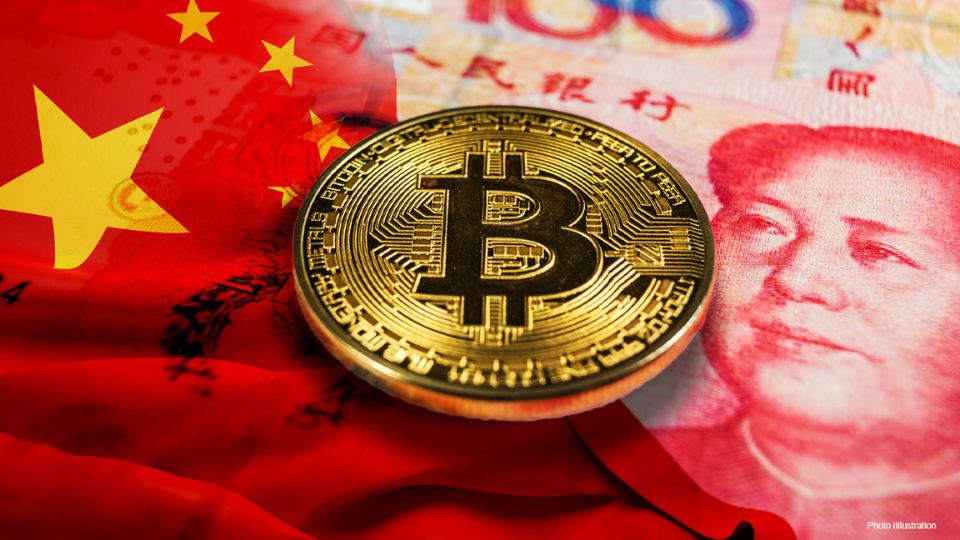Big government regulators, including those overseeing Chinese crypto, have been struggling to get their heads wrapped around the freedoms offered by the world of cryptocurrencies.
Major world power bureaucrats, including US and EU regulators along with their Chinese counterparts, have been grappling with the same issue. They are all trying to control the uncontrollable rapid rise in blockchain and cryptocurrency adoption.
On the other hand, legislators from smaller countries and larger emerging economies have been far more accepting of this new technology’s benefits for their financial markets. Countries such as the United Arab Emirates, El Salvador, Slovenia, Singapore, and many others have been rushing towards embracing this new technology.
As far as the largest nations are concerned, China, in particular, has the economic power to rapidly accelerate the adoption of cryptocurrencies on a global scale. The question is are they going to allow this technology to blossom or will Beijing continue to try to stifle this dynamic financial innovation?
The History of Chinese Crypto is one of Resilience and Innovation
In 2012, with the global fascination in cryptocurrencies just beginning to rise, China’s crypto market emerged as a front-runner. Bitcoin became a popular trading asset, with the nation’s investors driving substantial market demand.
The period between 2012 and 2021 saw significant fluctuations in the crypto market, with China often at the epicenter. The trading volume of Bitcoin in China rapidly grew, leading the country to be recognized as a major player on the world stage, alongside the U.S.
However, from Beijing’s perspective, cryptocurrencies empowered non-state actors. This increased the potential for systemic financial turbulence and disorder. This concern stemmed from Chinese crypto’s potential to hide capital outflows and facilitate money laundering.
When the Chinese government intensified its crackdown on cryptocurrencies, including banning crypto exchanges and Initial Coin Offerings (ICOs) in 2017, many feared it would spell the end for the burgeoning market. However, the reality was far from it. Instead of collapsing, the Chinese crypto community adapted, seeking alternative methods to engage with digital assets.
In 2021, China intensified its crackdown on cryptocurrencies with a comprehensive document signed by 10 official bodies, outlining a broad array of restrictions. This document clarified that virtual currencies did not possess the same legal status as fiat currency, effectively declaring Bitcoin and other digital currencies as not legal tender within China.
It categorized virtual currency-related business activities as illegal financial operations. Furthermore, it prohibited exchange businesses from buying and selling virtual currencies as central counterparties. It also attempted to bar overseas virtual currency exchanges from offering services to Chinese residents via the Internet.
Related: BRICS Blockchain May Unleash End to Dollar’s Reign
Chinese Crypto Regulation Loopholes and Covert Workarounds
Despite the extensive crackdown, especially on domestic crypto mining in 2021, there remain significant loopholes in the regulations. Notably, the 2021 directives do not seem to prevent individuals from holding cryptocurrencies or engaging in peer-to-peer trading.
Moreover, an important section of the document highlights the legal risks associated with participating in virtual currency investments and trading. This section indicates that any losses incurred from such activities, especially those that contravene public order and morals, will not be entertained by the government. This suggests a tacit acknowledgment of individual crypto activities, drawing a line between what is unprotected by law and what is outright banned.

Despite the regulations, China saw substantial investments pour into the industry. Blockchain technology gained recognition not only for its financial applications but also for its potential to revolutionize various sectors. By 2021, China’s impact on Bitcoin’s valuation had become globally acknowledged. Blockchain market trends are now often directly linked to the country’s overall investor activity and regulatory environment.
One of the key strategies employed by the Chinese crypto industry has been to move operations offshore while still catering to Chinese investors. Exchanges and ICOs rebranded and relocated, establishing bases in more crypto-friendly jurisdictions.
However, they continued to serve the Chinese market through virtual private networks (VPNs) and other means that obscure users’ locations. This shift allowed Chinese crypto activities to continue, albeit in a more covert manner.
Popular Platforms and Locations for Trading Chinese Cryptocurrencies
Traders in China have pivoted to foreign and peer-to-peer platforms that can circumvent local restrictions. Currently, Bitcoin (BTC) and Ethereum (ETH) remain the most sought-after cryptocurrencies among Chinese traders, despite the government’s ban.
Additionally, altcoins such as XRP, Solana, and Tron are also gaining traction within the underground markets due to their growing global presence and innovative technologies. Market demand for these digital assets persists, reflecting the robust interest in blockchain technologies and their potential.
As direct cryptocurrency transactions face government scrutiny, traders and enthusiasts are exploring innovative payment solutions. Cryptocurrency transactions often occur through intermediaries or third-party services outside mainland China, such as in Hong Kong, which serves as a hub for crypto activities.
Notably, Bank of China’s Hong Kong branches, as well as China Asset Management (ChinaAMC) and Harvest Fund Management Co, are exploring managed services in the digital asset sector within the territory.
These types of offshore services employ various methods to facilitate trading while adhering to regional regulations. This reflects the resilience of Chinese market demand for digital assets and the adaptability of payment systems in response to regulatory challenges.
Related: Exploring Crypto Exchanges: Spotlight on the Top 5 US Platforms and Their Regulatory Concerns
Looking Ahead at Adjustments to Chinese Crypto Policies
Recently, the Shanghai Second Intermediate People’s Court’s ruling in 2023 declared Bitcoin as a “unique and non-replicable” asset, signaling a pivot in China’s stance on cryptocurrencies. This subtle shift likely reflects a new and nuanced approach to regulation.
Significantly, China’s central government is focused on leveraging blockchain technology, particularly in its development of a Central Bank Digital Currency (CBDC).
A Central Bank Digital Currency (CBDC) is a digital form of a country’s fiat currency, which is issued and regulated by the nation’s central bank. Unlike cryptocurrencies such as Bitcoin, which are decentralized and operate on a blockchain technology framework without any central authority, CBDCs are centralized and backed by the government.
They aim to provide a new way of conducting financial transactions and to modernize the financial system for the digital age. The introduction of the Chinese CBDC underscores Beijing’s intent to harness the potential of digital assets within a regulated framework.
While China has cracked down on cryptocurrency trading and mining activities, it still embraces blockchain for its potential to enhance various economic sectors through increased efficiency and transparency. The ongoing evolution points towards a China that recognizes the technological benefits of blockchain while seeking to minimize the associated financial risks for its economy and its people.





